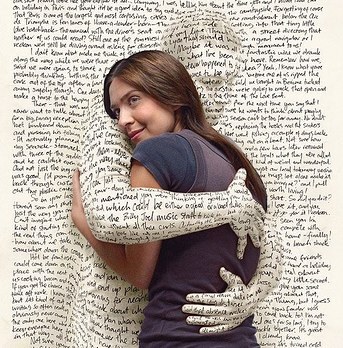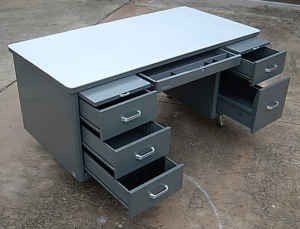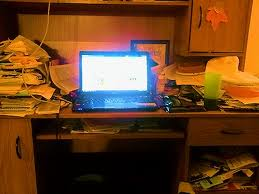*Note* to the first-time-GTD-reader …


- Set up a reference filing system (Evernote + Fujitsu ScanSnap)
- Most of my messes and clutter came from not having a good place to put X in. Where X is an email, a piece of paper, a mind map for a project, or an agenda for a conversation with a client. When you have the “ughhh” feeling when you need to put X down, but don’t have a good place to put X, then you’re experiencing hardening of the categories. New rule, whenever you don’t have a place to put an X, then instead of just piling X up with other X, first put the X in your inbox and then add a project to think through a place that makes sense for X and its siblings. Then, when you have time, you can ratchet your organization up a notch by systematically plugging the holes in your trusted system bucket. Just having a place for X is a huge improvement over piles.
- Write ideas down one-idea-one-piece-of-paper
- Set up project folders (both electronically and in physical manila folders)
- Separate the processing work, from doing of work (a HUGE leap forward for me personally)
- Work more efficiently by consciously keeping my constraints in mind. Energy, focus, enthusiasm for tasks are HUGE in my getting tasks completed. Before GTD I would just work to exhaustion, sleep, repeat. After GTD I started pre-processing tasks (lists for “buy” that I put stuff on, and then look at the list in the store, lists for “people,” where I write down stuff as stuff comes to mind relating to a person) and then consciously switching to lower involvement tasks when I get tired.
- I realized after reading GTD chapter 3, that I was not doing enough natural project management. I have always loved mind-maps, but I never realized they are best at surfacing next actions and list items. David Allen put them in context for me in Chapter 3. Now I am holding myself accountable to doing enough mind mapping and brainstorming (going for quantity not quality). Natural project management dramatically speeds up projects.
- I found the beginning of the trail that is leading me to clutter-free work spaces. And, the unbearable lightness of being … paperless. :-)
- Intervention #1: Get a real desk! Every brain deserves a kick-ass place to work. Typically this means
-
Make your desk much bigger. You need 30 square feet of desk space in your office. Not 30 squares in one desk, but 30 squares locally available.

-
-
Source: OnlineOrganizing.com
Get your desk completely clutter free from the surface of the desk up to 6″ off the desk. Only exception should be a monitor arm. Monitor arms prevent your current small size desk from being turned into an overgrown monitor stand.
Source: Flickr
To do your work you need elbow room. You need to be able to spread 3″x5″ cards, letter sized mind maps, and even butcher block sized mind maps across your desk all at the same time. When you get a big desk and fill it up with monitors, iPads, scanners, etc., you loose the opportunity to so much as fit a sandwich on your desk. Computers are not your brain. They are small piece of what GTD is about. Keep computers in proportion to your desk, as they make a true contribution to your job. Don’t let computers be the tail that wags your work dog.
The balance of computer/thinking-work facilities have shifted in the past three decades. Back in the day, a 30′x60″x30″ desk was the default. Here’s a pic:

Source: AmericaListed.com
And companies had huge “bull pens” of hundreds of this kind of desk lined up.
Source: John Lubans
You might want to check out the Early Office Museum if you’d like to see more early office pics. Space was made for desks, though far from perfect this was more clutter-free than today’s cubicles. Here is a representative home office desk today:

Source: CutestKidEver.org
And then an office-office cubicle environment. The unique innovation of the modern cube is that the workspace itself is visual clutter. But, it gets better when you have phones BBBBBBBBBRRRRRRRRringing and people talking.
Source: Workspacesolutions.com
The bottom line is that today, a desk sized to allow brains to work are considered luxuries. And modern offices have “furniture police” (see chapter 7 of Demarco & Lister’s book PEOPLEWARE (free summery here)) who take it as their mission to impose total uniformity.
I feel very lucky to be able to control my desk. Control is important because your desk is a way that your conscious mind can demonstrate to your unconscious mind, that the unconscious is fully respected, valued, and celebrated. Without desk control, people take sick days when they need to get something done, spreading out on the dining room table (a great starter desk!).
Conscious? Subconscious? Wait! What?
Right now I’m reading a fantastic book READING IN THE BRAIN. This book is about the brain as computational image processing pipeline. The research reported in the book steps millimeter by millimeter through the brain mapping out which neurons are doing what. Neurons seem to be hard wired to recognize the sub-shapes of word. Every word is a complex tree. In the following image, see how the neurons assemble letters from the primitive sub-letter shapes in the bottom row of processing.
Source: READING IN THE BRAIN L 755
When we put a shape in front of our eyes, we kick off large quantities of unconscious recognizing and processing.
Source: READING IN THE BRAIN L 670
“This view holds that the letterbox area of the brain initially evolved to recognize natural images, but not the shapes of letters or words. Nonetheless, evolution endowed it with a capacity to learn, and thus to turn itself into a reading device. Our writing systems have progressively discovered and exploited the elementary shapes that this region is capable of representing. In brief, our cortex did not specifically evolve for writing—there was neither the time nor sufficient evolutionary pressure for this to occur. On the contrary, writing evolved to fit the cortex. Our writing systems changed under the constraint that even a primate brain had to find them easy to acquire.”
Source: READING IN THE BRAIN L 2346-2351
I am only 1/2 way through the book, but based on what I’ve read so far, clutter triggers unconscious processing that is at the least an energy drain and at worst an energy drain + constant distraction. Look at your desk and pretend you are a monkey. Is there anything on your desk a monkey would be intrigued with? We are monkeys, GTD monkeys. And clutter is intriguing to our inner monkeys.
David Allen, when interviewed for the book WILLPOWER used a very provocative Buddhist image:
“When he began working with overtaxed executives, he saw the problem with the traditional big-picture type of management planning, like writing mission statements, defining long-term goals, and setting priorities. He appreciated the necessity of lofty objectives, but he could see that these clients were too distracted to focus on even the simplest task of the moment. Allen described their affliction with another Buddhist image, “monkey mind,” which refers to a mind plagued with constantly shifting thoughts, like a monkey leaping wildly from tree to tree.”
Source: WILLPOWER (pp. 77-78)
Here is Drew Carey’s description of his desk before GTD:
“I have self-control in some ways, but not in others,” Carey says. “It depends on what’s at stake. I just got so fed up with the mess in my office. I had boxes of paperwork and a desk I couldn’t get through. Both sides of my computer were piled up with crap and old mail. You know, it was at a point where I couldn’t think. I always felt out of control. I always knew I had stuff to do. You can’t read a book and enjoy yourself because in the back of your mind you feel like, I should go through those e-mails I have. You’re never really at rest.”
Source: WILLPOWER (p 74)
OK, let’s piece a couple ideas together. First, we are evolved from monkeys (hey, God had to create us through some physical mechanism, why not evolution?) so we live in hot-wired monkey brains. Second, we have an innate propensity to attract work and paper. Like the Peter Principle of managers being promoted to their level of incompetence, it may well be that knowledge workers attract work to the point of “monkey mind” incompetence.
And what is insidious is that clutter organizers, just magnify the problem. See what Mindy Starns Clark says about organizing tools:
“I thought that getting a house organized began with buying lots of cool holders, bins, dividers, and charts and then the stuff would almost jump inside and organize itself. I didn’t know I should never buy any organizational product unless it serves a specific function in a specific place. And even then the purchase should be made only after I’ve measured for it and determined the exact size and shape of organizer I need. In fact, it wasn’t until I began researching housekeeping in earnest that I learned that most organizational products create more mess than they help to contain.”
- Intervention #2: Get a reference filing system that is easier to use, than to not use. See: Evernote + Fujitsu ScanSnap
Source: Vi.sualize.us
- Intervention #3: Do a complete mind dump.
- Sit down for an hour with Excel, or Paper, or Word, and write down every thought that comes to mind about anything that is out of place in your life. I typically give students 20 minutes to do this in class, which I let run for 40 minutes (the student’s don’t notice because they all have a TON of open loops in their minds). Do it for an hour the first day, and then 20 minutes a day for the rest of the week.
- *Note* Mind dumps are a great method to get back on the GTD wagon after you have fallen off.
Source: Austin Kleon
- Intervention #4: Get a copy of THE HOUSE THAT CLEANS ITSELF and read up on the author’s ideas around “stations.” In short, the method Mindy Starns Clark uses, is to let the messes build up in your house by not cleaning. Then, get a ladder, then climb the ladder with a camera by each mess, then take pictures looking down from the ladder, then print out the pictures, and then figure out the root cause of the mess, and design stations, to prevent the root cause from recurring. “Stations” allow you to do 100% of a job in one place, without having to make side trips to get materials or tools. In our new house, I’m going to build a charging station by the front door or the garage door once I figure out which door I’ll usually use. In the apartment I had a charging station by my desk, which was great for getting the devices on the teat, but not so good for taking them off before I left for school
- The concept of “stations” resonates in harmony with GTD. Much of the GTD methodology itself can be decomposed into stations. The desk is a station. The phone is a station. Agendas for conversations with important people, are mental stations for future conversations.

Source: AllWomensTalk.com

I have been enjoying your posts and you helped push me to create my home desk, and long time next action gathering dust on my lists.
Ikea Gallant desk went in on Sunday. S1500 scanner to replace my S1300 was ordered yesterday. It’s not 30 square feet, but its as big as will fit.
The monitor and arm will have to wait until the cash flow catches up but I am on my way.
Thanks!
Can you send a picture that I can post? Great if you have a “before” and an “after” picture, but the after picture would be great all by itself!
[email protected]
No before as there was nothing. I’ll post an after as soon as its mostly done.
Where is my “after picture”????????
b
p.s., Hope you are *feeling the love*!!!!!
I could post a work in progress :) Some much not done it actually looks like a before!
F-A-N-T-A-S-T-I-C!!!! Hope you enjoy your desks as much as I enjoy mine! Which Galant work surface did you get? Which legs? I always buy the “A” legs, but can’t figure out how to hang any paper trays off them (at knee height).
bill
Great post… i am using GTD for 3 years now and it helps on my daily life!!!
Hey!
I’ve got an econ student from Brazil so I’m getting up to speed on having Google Chrome translate Portugese for me. I’m following you!
Now, can you send pictures of your desk (bot “not picked up,” and “super clean”)? If you have pictures of your desk before GTD, that would be TOTALLY AWESOME!
[email protected]
No bill, sorry but i have no pictures of my desk before GTD :-)
Ok, I’ll settle for an after picture if that is all I can get! Email to [email protected]
b
I definitely agree on chapters 1, 2 and 3. Great post Bill.
Marc,
Can you share WHY you think the first three chapters “thing” is good? Is it related to your GTD with Teachers Work? Or, else????????
Thanks!
[email protected]
I loved that post. The first three chapters of GTD is the easiest way to start. I live by the rule if you can do it in 2 minutes or less…get it off your plate! I think about that everyday I sort through 100 emails; can I take care of it now or do I need to create a task. I use Outlook much more efficiently and it keeps me on task and organized (+1). I have a reference folder, today folder, and my “note card” folder. I am trying to go paperless so the sheet of paper just evolved into sorting email electronically and organizing information into outlook.
This post also reminded me of a HBR article I read by William Oncken and Donald Wass (1999) “Who’s got the Monkey”. The article spoke about managers who were are taking on problems and issues that should/could belong to others. Getting things done for me also means getting the monkeys off my back!
Great post Bill.
I ADORE Oncken’s book MANAGING MANAGEMENT TIME: Who’s got the monkey?. I know you will find this HARD TO BELIEVE but, I once forced my friend Glen to buy the book at gun point. He read it on a plane ride from Michigan to Colorado, and *flipped* about how helpful it was at work.
Glen’s experience has made me more bold to recommend CRITICALLY IMPORTANT BOOKS like: GTD, THE STRATEGY AND TACTICS OF PRICING, SWITCH, as well as MANAGING MANAGEMENT TIME.
FANTASTIC serendipity (one of the ten hardest English words to translate) that you made the Oncken connection to GTD! You are my smartest student!
b
no “menterao” de “na”..por que no se leer en ingles…ji,ji,ji,ji….
Pedro,
Can you find a way to translate the first half of this sentence to English? I could get Google translate to do the last half “those that read in English” but I’m cluless about the first half of the post.
Anyone else reading that can, please translate Pedro’s comment?
Thanks!!!
bill meade
[email protected]
Does this say that you’ll send me before and after pictures of your desk? :-)
b
Very well done…David Allen is going to need to start sending you a commission for the books that get sold with your teasers. I especially liked the history of the desk pictures. It’s always interesting to learn about from where things come in a historical context. The beauty of GTD is allowing oneself to accept where they are, working with the GTD premisses as fit in ones life. Having a method to deal with what could potentially be overwhelming is the golden nugget to be taken away.
And for me, I did not stop at Chapter 3, I listened to it 4 more times. Cover to cover, bought some items and keep trying to keep on track.
You are a wonderful teacher, but my worst best GTD student. :-)
I’m teaching GETTING STARTED WITH GTD this Friday and Saturday at CU if you’d like to attend.
b
Show me the evidence! :-)
b
Pingback: Repartir du bon pied | vrjbln.net